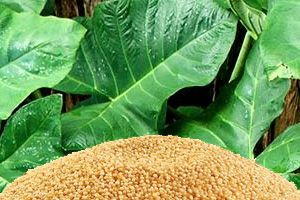What Is Amaranth?
What Is Amaranth?

Amaranth is a group of nearly 60 different species of plants. Amaranth has been cultivated for thousands of years in South America, Africa, Asia, and Europe. Different species exist and are cultivated throughout the world.
The whole plant is used, including the leaves, stems, roots, and seeds. Some species like Amaranthus caudatus, Amaranthus cruentus, and Amaranthus hypochondriacus are grown for its seeds, which are used as grains.
Amaranth Seeds
Amaranth seeds are often referred to as amaranth grain because they have a similar nutrient makeup to grains like wheat and oats. Amaranth grain was cultivated by the Aztecs and was a major part of the food they ate until they were conquered be the Spanish.
The grain was an important part of the diet because of its high nutrient content. Amaranth nutrition is important because amaranth is high in protein, vitamins, and minerals. Amaranth grain is also easy to cook and is gluten free.
Other species like Amaranthus cruentus, Amaranthus blitum, Amaranthus dubius, and Amaranthus tricolor are grown for its leaves, stems, and roots.
Amaranth Leaves And Stems
Amaranth leaves and stems are prepared as a leaf vegetable like how kale is prepared. Amaranth leaves and stems are prepared in mostly “cooked dishes” throughout the world. It is prepared in different ways depending of the availability and popularity of spices of a given country and the dishes take on their own unique names.
In Jamaica amaranth leaves are called callaloo and is stewed with garlic, tomatoes, scotch bonnet pepper, thyme, and onions. In Trinidad amaranth is known as and is cooked in a dish called bhaji, and is cooked with coconut milk.
In Africa amaranth leaves are known as bonongwe, doodo, mchicha, telele, and terere.
Amaranth Root
Amaranth root is boiled until tender and is eaten like other root vegetables like yams or potatoes.






